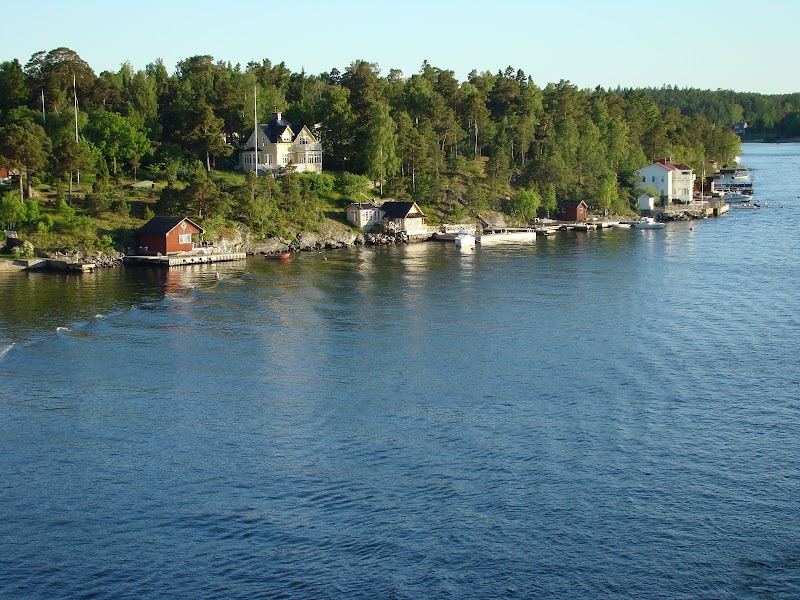
Step Back in Time at the Stockholm Viking Festival in Bromma
Experience the Stockholm Viking Festival in Bromma, where history bursts alive through authentic Viking reenactments and outdoor cultural activities. Perfectly timed for summer visitors, the festival blends engaging storytelling with an approachable setting suitable for families and adventure seekers.
Wear sturdy footwear
The festival covers grassy and forested terrain with uneven surfaces. Shoes with good grip will keep you comfortable and safe on damp or uneven ground.
Bring a refillable water bottle
July’s summer heat can be intense. Stay hydrated by carrying water, especially if you plan to explore all festival stations actively.
Arrive early or late
To avoid crowds and enjoy softer light for photography or quiet reflection, visit during early morning or late afternoon hours.
Use public transport if possible
Parking can be limited, so taking a bus or taxi from Stockholm city center is a practical choice that reduces stress and environmental impact.
Step Back in Time at the Stockholm Viking Festival in Bromma
Each summer, Bromma in Stockholm County transforms into a lively stage where history boldly steps forward at the Stockholm Viking Festival. Located just a short drive from central Stockholm, this cultural outdoor event invites adventurers and history enthusiasts alike to explore the fierce and fascinating world of Viking life, wrapped in authentic reenactments, skill demonstrations, and hands-on activities. The event grounds stretch across open fields and forest edges, with tents and workshops standing firm like Viking longhouses daring you to explore.
The festival is not a passive spectacle; it’s an encounter with a culture fiercely itself, where the clang of blacksmiths’ hammers, the sharp snap of bows, and the deep hum of ancient songs fill the air. Visitors can watch warriors prepare for battle in the training grounds, learn traditional crafts such as leatherworking and weaving, and even taste foods prepared from Viking-era recipes. The forest nearby leans in close, its trees whispering secrets as runners and vendors thread paths worn by years of gathering crowds.
For those planning their visit, practical details are crucial. The festival typically runs over a weekend in July, making summer the ideal time to experience long daylight hours and warm weather. Since the terrain combines grassy fields with uneven forest paths, sturdy footwear is a must – waterproof hiking shoes or boots with good grip will steady your steps on damp mornings or after light rain. The festival area covers roughly 2 kilometers end-to-end, making it an accessible stroll, though taking your time to stop at each station will expand the day into a fulfilling adventure.
Hydration is essential, especially in July’s sun, and while there are food stalls, bringing your own water bottle helps maintain energy throughout the day. Arriving early in the morning or late afternoon can offer a sweeter, quieter experience as the festival winds up or revs down, with softer light casting long shadows.
This event is great for families, historians, and anyone who enjoys an immersive outdoor experience grounded in real culture and craft. It’s not a race but an engagement—an invitation to meet the Viking spirit on its own terms, respecting the land and stories kept alive by dedicated reenactors. Step into Bromma’s fields this summer and let the Vikings challenge your sense of time, place, and adventure.
Nearby Trips
All Adventures
Boat Charters
Water Activities
Adventures near Bromma, Stockholm County
Discover the unique and memorable adventures that make Bromma, Stockholm County special.
Frequently Asked Questions
How accessible is the Stockholm Viking Festival for families with children?
The festival is family-friendly, offering many hands-on activities suited for children, including crafts and mock battles. Paths are manageable for strollers, though some forest trails might be uneven.
Are there guided tours available at the festival?
Yes, several guided tours focusing on Viking history and crafts run on both days. These tours deepen engagement and provide context for the exhibits and reenactments.
Can I purchase food and drinks on-site?
Food stalls offer traditional Nordic fare alongside modern snacks. However, bringing water and snacks is advisable as queues can form during peak hours.
Is the event usually crowded?
The festival attracts a steady local and tourist crowd especially midday, but arriving early or late can provide a more relaxed experience.
What wildlife might I see around the festival grounds?
The nearby forests host songbirds like warblers and woodpeckers, small mammals such as squirrels, and occasionally deer glimpsing between the trees near dusk.
Are dogs allowed at the festival?
Dogs are generally allowed but must be kept on leash. The event ground can be busy and noisy, so consider your pet’s comfort and the rules before bringing them.
Recommended Gear
Waterproof hiking shoes
Provides stability and protection on grassy and forested terrain, essential for uneven or damp conditions.
Sunhat and sunscreen
Shield yourself from Sweden’s summer sun during extended outdoor exposure.
Light daypack
Carry water, snacks, and a camera comfortably throughout the festival.
Camera or smartphone
Capture the vivid scenes of Viking reenactments and the natural beauty surrounding Bromma.
Local Insights
Hidden Gems
- "A quiet viewpoint just beyond the festival site offers panoramic views over Lake Mälaren’s sparkling waters."
- "Nearby small woodland trails feature old rune stones often overlooked by festival visitors."
Wildlife
- "Look for red squirrels darting through the trees and the occasional buzzard circling overhead."
- "Migratory birds settle in the lakeside reed beds adjacent to the festival grounds, especially in early summer."
History
"Bromma has roots that stretch back to Viking times, evidenced by nearby archaeological sites. The festival is more than entertainment; it’s a revival of the living history embedded in the landscape."
